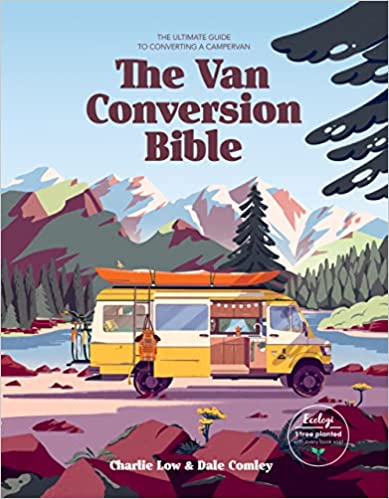
A Comprehensive DIY Guide to the Van Life
The van life concept dates back to 1910 when vehicles like the Packard truck were adapted for travel. (Wikipedia takes the concept back further, to horse drawn wagons, such as the covered Conestoga wagons that populated the early western frontier in the U.S.) Life on wheels (either full time or as a camping option) has had its aficionados and detractors for decades. More recently, the pandemic brought about lifestyle changes that accelerated the trend of people at least trying out a “digital nomad” lifestyle.
The Van Conversion Bible: The Ultimate Guide to Converting a Campervan by Charlie Low and Dale Comley is a thorough DIY guide to creating and using your own conversion van. Self-taught van converters, both have a background in STEM as well as a passion for the outdoors. While they of course use their own expertise in writing this book, they also include trials and errors discovered through a survey of 1,200 other van converters.
While of course you can purchase an already converted van, if you have the time and the inclination, doing the work yourself may save money and also helps to ensure you have the features you desire. According to the authors, DIY conversion costs run about $7,000 to $14,000 (in addition to the purchase cost of the van you are converting.)
In addition to their own, Low and Comley relate the story of three other van converters, showing the costs (in money and time), and then compare the features of all four campervans. They discuss different ways to approach the planning, and talk about what to consider when choosing the best van for your needs: what to look for in shopping for a van and things to consider when planning structural changes such as windows, pop-up roofs, fill points for water and propane, insulation and power supplies.
While this is a DIY book, the authors are honest about the challenges. Converting a van is not a quick and easy task. They stress that the design process takes time and that shortcuts are inadvisable. The reader will benefit from their experience and research: they helpfully offer comparisons of various design tools (many are free), and suggest that interior design aspects should be addressed before even starting the project
The Van Conversion Bible presents nine steps in the build phase and includes helpful how-tos and safety guidelines. The book seems to cover it all: it presents options for everything you need to make your van a home: heating, stoves, sinks, toilets, water tanks. A section dedicated to shopping includes everything from building supplies (from lumber to fasteners) to tools as well as tapes and paint. For complete newbies, the final chapter talks about van life – the highs and the lows and general etiquette.
This book is full of graphs, charts, diagrams and beautiful interior photos. While the van life may not be for everyone, the authors make a convincing case that converting your own van is not only possible, but in some cases preferable to buying ready-made.




